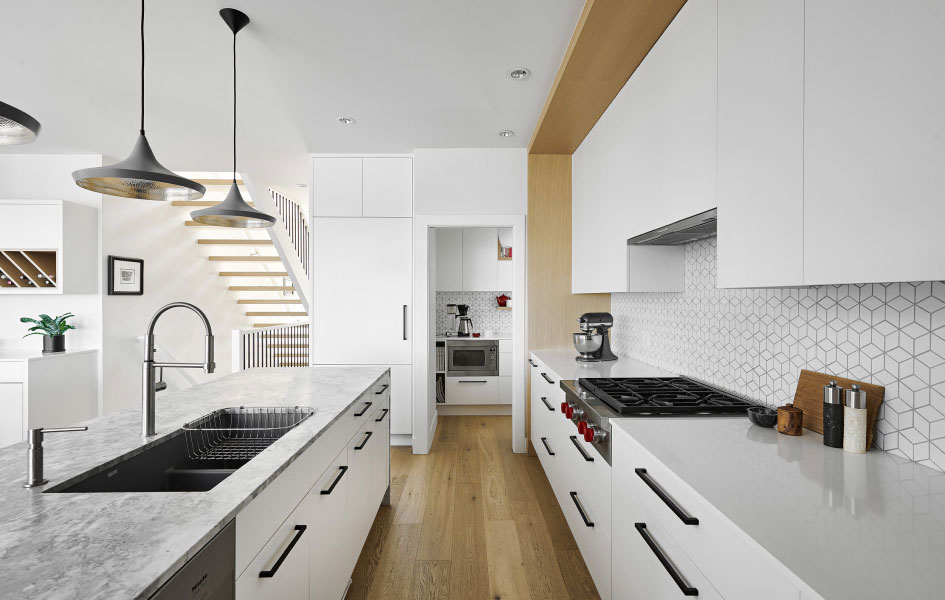The allure of Middle Eastern design is rooted in rich history, vibrant colors, and intricate patterns. As homeowners seek to create spaces that reflect their cultural heritage, incorporating Middle Eastern aesthetics into contemporary kitchens has become increasingly popular. This blend of tradition and modernity not only enhances the visual appeal of your kitchen but also brings warmth and character to the heart of your home. Here are some design tips to help you achieve this harmonious fusion.
1. Use of Color and Texture
Middle Eastern design is renowned for its bold colors and diverse textures. To incorporate this aesthetic into your kitchen, consider using a rich color palette that includes jewel tones like deep blues, vibrant reds, and lush greens. Accent these colors with textured elements such as:
- Mosaic Tiles: Use mosaic tiles as a backsplash or to highlight specific areas. Their intricate patterns can serve as a focal point while adding depth to your kitchen.
- Textured Fabrics: Introduce Middle Eastern-inspired textiles, such as patterned curtains or table linens, to add softness and warmth.
2. Intricate Patterns and Designs
Incorporating intricate patterns is essential for achieving an authentic Middle Eastern feel. Here are a few ways to integrate these designs:
- Cabinetry: Opt for custom cabinetry with carved or inlaid patterns. These details can evoke traditional craftsmanship while maintaining a modern silhouette.
- Decorative Accents: Use decorative plates, vases, or wall art featuring traditional Middle Eastern motifs. These accents can provide a beautiful contrast against modern cabinetry and appliances.
3. Functional Layout with Cultural Elements
The layout of your kitchen should prioritize functionality while also embracing cultural elements. Consider the following:
- Open Shelving: Open shelves allow you to display beautiful dishware and decorative items. Showcase traditional Middle Eastern pottery or glassware, turning functional storage into a design feature.
- Central Island: A central island can serve as a gathering space, reminiscent of traditional Middle Eastern hospitality. Consider adding decorative stools or seating to create an inviting atmosphere.
4. Lighting that Reflects Tradition
Lighting plays a crucial role in setting the mood of your kitchen. To incorporate Middle Eastern aesthetics:
- Pendant Lights: Choose pendant lights with intricate designs or lantern-inspired shapes. These fixtures can serve as statement pieces, casting beautiful shadows and creating an enchanting ambiance.
- Warm Lighting: Opt for warm, soft lighting that enhances the cozy and inviting nature of your kitchen. Layer your lighting with different sources to create depth and interest.
5. Blend of Modern and Traditional Appliances
While traditional aesthetics are essential, modern appliances are a must for functionality. Select appliances that complement the overall design without compromising on style:
- Color Coordination: Choose appliances in muted tones or finishes that blend seamlessly with your color palette. Stainless steel or matte finishes can provide a contemporary touch while allowing the Middle Eastern elements to shine.
- Integration: Consider integrating appliances behind cabinetry for a streamlined look. This helps maintain the traditional aesthetic while ensuring your kitchen remains highly functional.
Conclusion
Incorporating Middle Eastern aesthetics into contemporary kitchens allows you to create a space that is not only visually stunning but also rich in cultural significance. By thoughtfully combining bold colors, intricate patterns, and traditional elements with modern functionality, you can achieve a harmonious blend that transforms your kitchen into a welcoming and stylish retreat. Embrace these design tips to celebrate your heritage while enjoying the conveniences of modern living.




